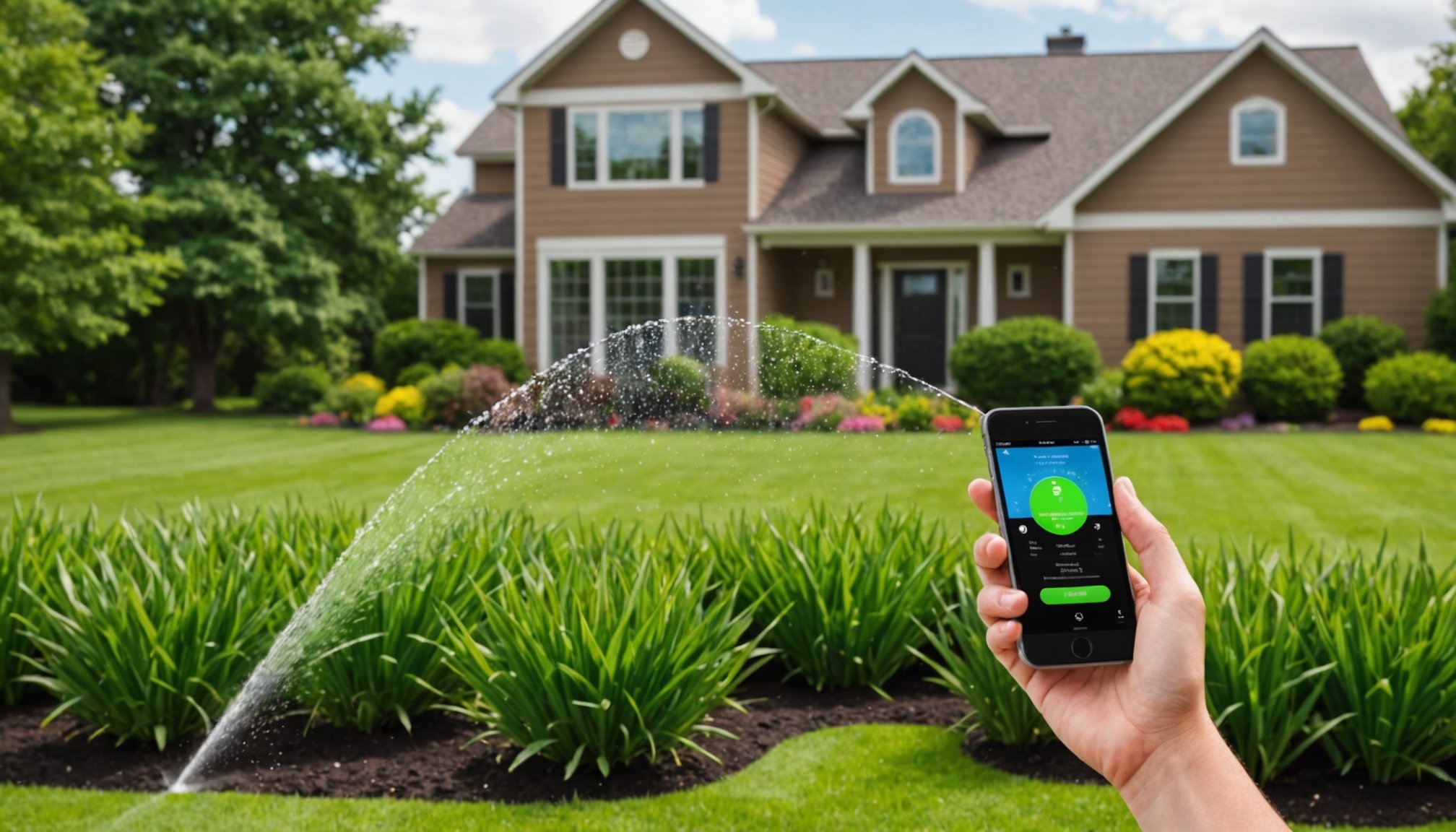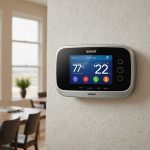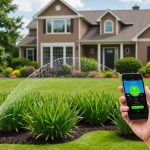Smart home irrigation systems offer unparalleled convenience, helping you maintain a lush garden with minimal effort. With the right setup, you can control your watering schedule directly from your smartphone, ensuring efficiency and water conservation. This guide explores essential tips and tools to help you master your smart home irrigation system. Unlock the potential of technology and take your gardening to the next level, making your outdoor space flourish effortlessly.
Understanding Smart Home Irrigation Systems
Smart irrigation systems have revolutionised garden management by offering automatic watering solutions that cater to the needs of modern homeowners. These systems utilise advanced technology to ensure your garden receives the right amount of water at the optimal times, enhancing plant health and conserving water resources.
Have you seen this : Unlock Energy Savings: How to Seamlessly Connect Your Smartphone with a Smart Thermostat
Overview of Smart Home Irrigation Technology
Smart irrigation systems integrate with home automation platforms, allowing users to control watering schedules through smartphones or voice assistants. They often include sensors that monitor soil moisture levels, weather forecasts, and plant types to adjust watering accordingly. This ensures efficient water usage, reducing waste and lowering utility bills.
Types of Smart Irrigation Systems Available
Several types of smart irrigation systems are available, including drip irrigation, sprinkler systems, and soaker hoses. Drip irrigation delivers water directly to the plant roots, minimising evaporation. Sprinkler systems are ideal for larger lawns, providing even coverage. Soaker hoses are suitable for flower beds and vegetable gardens, offering a gentle watering method.
Also to see : Unlocking Home Automation: A Step-by-Step Guide to Control Your Smart Devices with Your Smartphone
Key Features to Look for in a System
When selecting a smart irrigation system, consider features such as compatibility with existing smart home devices, ease of installation, and water-saving capabilities. Look for systems with weather-based scheduling, soil moisture sensors, and user-friendly interfaces to maximise garden management efficiency.
Setting Up Your Smart Irrigation System
Setting up a smart irrigation system is a straightforward process with the right installation guide. Begin by identifying the best location for your system's controller, ensuring it is protected from weather elements. Once positioned, follow the manufacturer’s step-by-step installation instructions to connect the controller to your water source and irrigation lines.
Next, focus on smartphone integration. Download the compatible app on your smartphone, which will allow you to manage the system remotely. This app is crucial for configuring initial settings and making real-time adjustments. Connect your system to your home Wi-Fi network by following the prompts on the app. This connection ensures seamless communication between your smartphone and the irrigation controller.
During the setup process, you will need to input specific details such as plant types, soil conditions, and local weather patterns. These inputs help the system tailor watering schedules to your garden's unique needs. Adjust settings as necessary, focusing on water conservation and plant health. Many systems offer initial configuration wizards that guide you through these adjustments, ensuring optimal performance from the start.
Optimizing Your Irrigation Schedule
Creating an efficient watering schedule is crucial for maintaining a healthy garden while conserving water. Start by assessing your garden's specific needs, such as plant types and soil conditions. This information will guide the frequency and duration of watering sessions.
Utilizing Moisture Sensors for Optimal Watering
Moisture sensors play a vital role in optimizing watering schedules. They provide real-time data about soil moisture levels, allowing your system to adjust watering times accordingly. By integrating moisture sensors, you can ensure plants receive water only when necessary, preventing overwatering and promoting plant health.
Adjusting Schedules Based on Weather Forecasts
Incorporate weather forecasts into your irrigation strategy to enhance efficiency. Many smart systems automatically adjust watering schedules based on upcoming weather conditions. For instance, if rain is predicted, the system can skip or reduce watering sessions, saving water and preventing root saturation.
To maximise the benefits of your smart irrigation system, regularly review and update your watering schedules. This proactive approach ensures your garden remains lush and healthy while reducing water usage. By leveraging technology such as moisture sensors and weather forecasts, you can maintain an efficient and environmentally-friendly garden management system.
Troubleshooting Common Issues
When managing a smart irrigation system, encountering common problems is inevitable. Understanding these issues and knowing how to address them ensures your system operates smoothly.
Identifying Common Issues
One frequent problem is connectivity issues. If your system fails to connect to your home Wi-Fi, check your router settings and ensure the irrigation controller is within range. Another issue is inaccurate moisture readings, often due to sensor placement. Ensure sensors are correctly positioned and free from debris for reliable data.
Simple Fixes for Connectivity Problems
To resolve connectivity issues, restart your router and the irrigation controller. If the problem persists, verify that the system's firmware is up-to-date. Also, ensure that your smartphone app is correctly configured and connected to the same network as the controller.
Maintenance Tips to Ensure System Longevity
Regular maintenance is crucial for system longevity. Clean sensors periodically to maintain accuracy and check for any wear on hoses or connections. Update software regularly to benefit from new features and improvements. By following these maintenance tips, you can prevent common problems and extend the life of your smart irrigation system.
Integrating Smart Irrigation with Other Smart Home Devices
Integrating your smart irrigation system with other smart home devices can significantly enhance the convenience and efficiency of your home automation ecosystem. By ensuring compatibility with platforms like Alexa or Google Home, you can manage your garden's watering schedule using just your voice or through a single app interface.
Benefits of Smart Home Integration
Smart home integration allows for seamless automation of your irrigation system, providing you with the ability to control watering schedules from anywhere. This integration ensures that your garden receives optimal care without requiring constant manual adjustments. It also allows for the creation of automated routines, such as pausing irrigation when your smart weather station detects rain.
Compatible Devices and Platforms
Many smart irrigation systems are designed to work with popular smart home platforms. Devices compatible with Amazon Alexa, Google Home, or Apple HomeKit allow for easy integration into your existing smart home setup. This compatibility facilitates voice-activated commands and centralized control, making garden management more intuitive.
Automation Strategies for Enhanced Convenience
Implementing automation strategies can further enhance the benefits of smart irrigation. For example, setting up routines that adjust watering based on weather forecasts or soil moisture levels ensures efficient water use. By leveraging these strategies, you can maintain a lush garden with minimal effort.
User Experiences and Case Studies
Exploring user reviews and case studies provides valuable insights into the practical applications of smart irrigation systems. These real-world experiences highlight both the successes and challenges faced by users, offering a comprehensive view of system performance.
Summary of User Reviews
User reviews often praise smart irrigation systems for their water-saving capabilities and ease of use. Many users report significant reductions in water bills and improved plant health. However, some reviews mention difficulties with initial setup and connectivity issues, emphasising the importance of following installation instructions carefully.
Case Studies Highlighting Effective Usage
Case studies reveal successful implementations in various settings, from residential gardens to commercial landscapes. One notable example involved a homeowner who integrated moisture sensors and weather forecasts, achieving a 30% reduction in water usage. This highlights the potential for smart irrigation systems to enhance efficiency and sustainability.
Lessons Learned from Real-World Applications
Real-world applications teach us the importance of regular maintenance and proper sensor placement. Users have found that keeping sensors free from debris and updating system software regularly can prevent common issues. These lessons underscore the need for ongoing attention to ensure optimal performance and longevity of smart irrigation systems.










